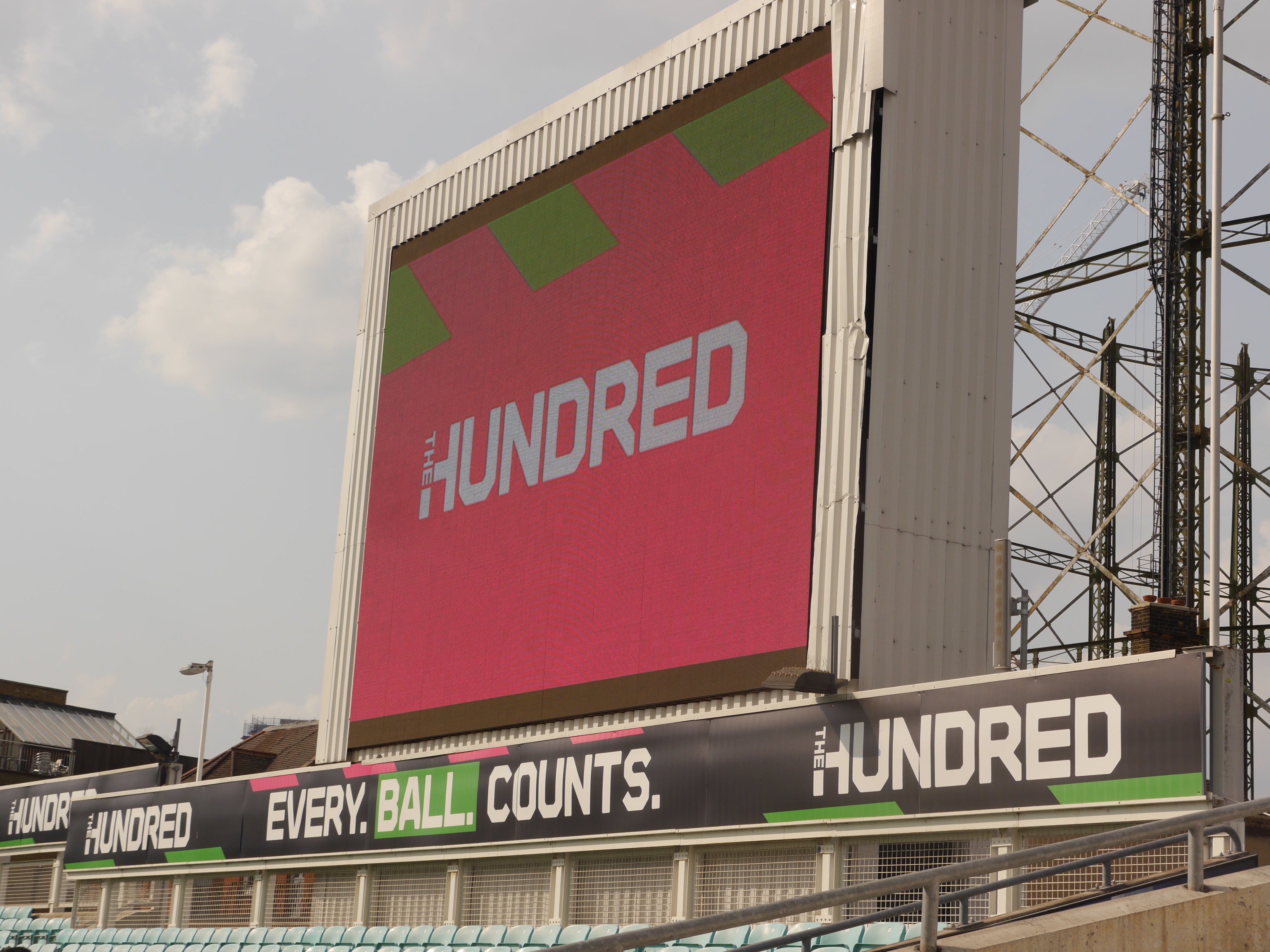The Hundred | Game one: How it differed from T20, what was new, what worked and what didn’t
The Oval Invincibles and the Manchester Originals played out a nail-biter that proved to be the perfect curtain-raiser for The Hundred, but discourse about the actual cricket can wait. Let’s talk about The Hundred, its intricacies and what actually unfolded on day one of the competition.

What were some of the cool things that happened?
FIREWORKS!

 ©
© As all 22 players took to the field, The Hundred officially kicked off in SPECTACULAR fashion. The Oval was surrounded by fireworks, and boy they were a thing of absolute beauty. The dazzling fireworks were so good that it left Manchester Originals opener, Emma Lamb, in absolute awe. Words won’t do justice to the moment, so here’s a picture that captures the moment.
Batters had their own entrances

 ©
© Camerapeople following batters all the way from the dressing room to the middle of the wicket has its own touch, but in The Hundred, there is something even better; much cooler. Batters have their own entrance, with their name and jersey number being digitally displayed as they walk out of the den. It does make them look special, and adds a bit of aura to the individual. WWE-esque. Entrance music missing, though, probably something for the future.
The Toss took place at the DJ stage

 ©
© Yes, this is not a drill. The two skippers and the match referee settled toss matters at the DJ stage. Was it actually cool? Debatable. But it did fit in with the competition’s overall motive to break stereotypes.
How was the contest different from a normal T20 game?
Two runs awarded in the case of a no-ball
Yes, you read that right. Two runs, not one, will be awarded to the batting team, should the bowling team bowl a no-ball.
Weird free-hit rule for no-balls
If we are to go by the first game, then it would seem that there are no free hits for balls that are called a ‘no-ball’ due to height. Oval Invincibles’ Shabnim Ismail bowled a no-ball (due to height) in the first innings (did not overstep) but the batting side were not awarded a free-hit. But when Kate Cross overstepped, the batting side were indeed awarded a free-hit.
No usage of the term ‘overs’ anywhere
That’s right. At The Hundred, we purely deal in balls, and balls only. There is no mention of the word ‘overs’. Not in the scorecard, not by the commentators. Bid goodbye to terms such as ‘run rate’, ‘required run rate’ etc. They don’t exist here. All you have, and will be shown, are balls and runs. Might irk a geek, but it does simplify matters, you know.
‘Five’, five everywhere
Everything associated with The Hundred is a multiple of five - simple as that. After every five balls, the umpire will pull out a white card to signal the end of a ‘five’. Post the signal, a new bowler can either be brought on to bowl another ‘five’, or the same bowler can bowl the next five balls. Remember, a bowler can bowl a maximum of 10 consecutive legal balls.
In one inning, a bowler can bowl a maximum of 20 balls. But the split of the 20 balls is completely up to the captain. A bowler can bowl 4 spells of 5 balls each, or 2 spells of 10 balls each, or 1 spell of 10 and 2 spells of 5. Everything is allowed.
A 25-ball powerplay
A multiple of five here too. Instead of the conventional ‘six overs’, the powerplay in The Hundred is the first 25 balls in the innings.
What stood out?
The scorecard graphics certainly were…..interesting.
It would be near-impossible to explain the graphics via text without sounding insane, so below is the screenshot of how the actual scorecard looked like, and what they displayed.

 ©
© Yes, this is all you’re going to get. Names of the batters (and their scores), name of the bowler (and their figures), balls, runs and wickets. No ball-by-ball breakdown. No info about what happened in the previous ball. No context to what’s happening in the ‘five’. Just balls, runs, wickets and the target required.
There is one interesting aspect in this graphic that is dynamic. The two bars on either side keep fluctuating in size. During the first innings, the bar grows taller in height with time, and during the second innings, it shrinks. Some might consider it a distracting, unnecessary addition, but it certainly is innovative.
What did not work?
The white cards
The on-field umpire pulling out the white card for every five balls seemed bizarre. The white card was shown regardless of whether the existing bowler got replaced - this was confusing. Perhaps it would be better if the white card is shown only when a bowler is set to be replaced (i.e at the end of their 5th ball if they’re bowling a 5-ball spell, or at the end of their 10th ball if they’re bowling a 10-ball spell).
The pace of the game
The ECB spent so much energy advertising The Hundred as cricket in fast-forward, yet only 84 balls (14 overs) were bowled at the end of the first hour of the match. That’s a figure that’s pretty standard across all forms of the game. The match did, nevertheless, move at a steady pace, but in no way was it a super-fast contest that proved to be completely different to T20 cricket.
Final Verdict
Was the curtain-raiser fun? Absolutely. It was a cracking game of cricket that was thoroughly entertaining. Did the format add to the excitement? An outright ‘yes’ cannot be the answer, but the challenges the format posed - especially to the bowling side - certainly added to the drama and spectacle. Contrary to what was being projected, the rules were indeed not over-complicated, and for the most part, the match mirrored a normal T20 contest. The funky format might take time to grow on people, but there are promising signs that, if nothing, The Hundred could prove to be a fun spectacle.

Comments
Sign up or log in to your account to leave comments and reactions
0 Comments